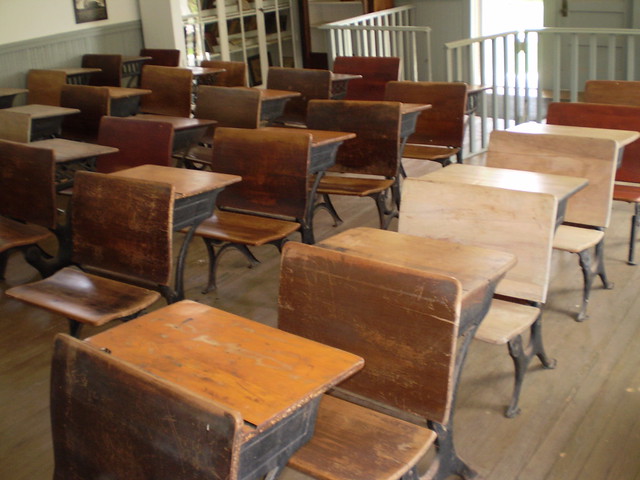That's why we need more of #10goodthings; more sharing of what's going so well in our own practice. Thanks to Ve Anusic, a good friend and colleague of mine, who challenged me to reflect & share some of the good things happening in my little world over the past year; and thus contribute to the positive dialogue in education!
#10GoodThings
2. A couple of days this past semester I was able to work alongside George Couros - someone I consider a rockstar in education.
3. Continuously revisiting my own professional practice around assessment, and doing away with traditional evaluation practices; and loving every bit of it. Gotta thank @AssessmentGeek for that one!
4. Hit 100,000 views on a Youtube video I posted for my students. It may not be that interesting, but I don't, nor have ever, taught that many students. It made me realize the vast connections we are able to make now through new media and technology.
5. I continuously learn about 'new' tools (ie. Kahoot, Thinglink, Canva, etc.) for use in the classroom and share them with others. For one I love learning about a new tool, but more importantly I love when a colleague uses it in their classroom and comes back to tell me how much their students enjoyed using it, and the greater learning experience it has given them.
6. I have encouraged my parents to begin using Instagram, Pinterest and Wordpress, to follow their own passions, and connect with the world.
7. I miss the classroom - this is a good thing. It reminds me of how much I love teaching.
8. Twitter has been good since I began using it. But find myself liking it more and more, mainly because of a very awesome PLN that has formed through the #peel21st hashtag. I find myself constantly learning from many amazing educators.
9. I am excited by many new opportunities to learn from others, as well as share my learning. Really excited to try out making a podcast with @jimmyblackwood!
And last but not least...
10. Blogging. I wish I could do it more, but when I do, I find it very beneficial. Like this very post, it allows me to truly reflect on what I am thinking or doing.
A little note:
I began this post wondering if I could even write about 10 positive things. I am now apologizing to those experiences, relationships, and past events that I failed to mention here. It's amazing what happens when you begin reflecting - you begin to realize just how much you have done, and the people who have contributed to it! There are a lot more than 10 'things' and maybe I'll write another list soon.



